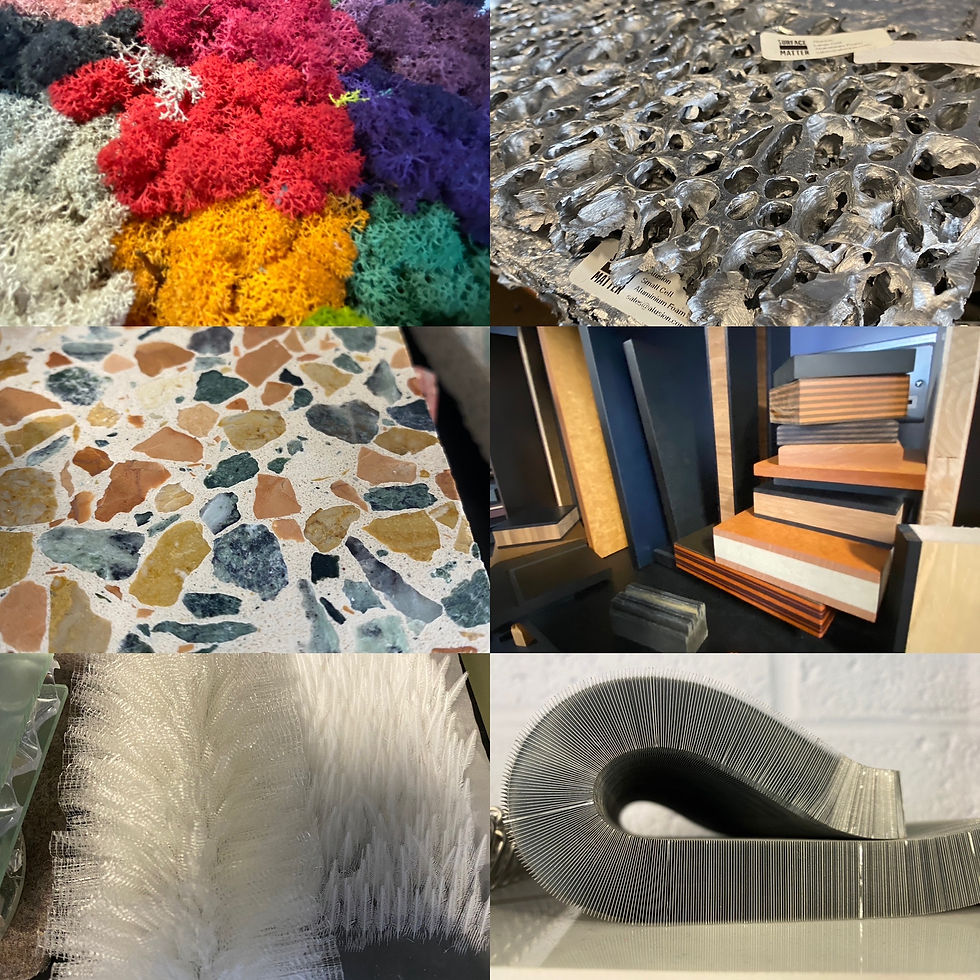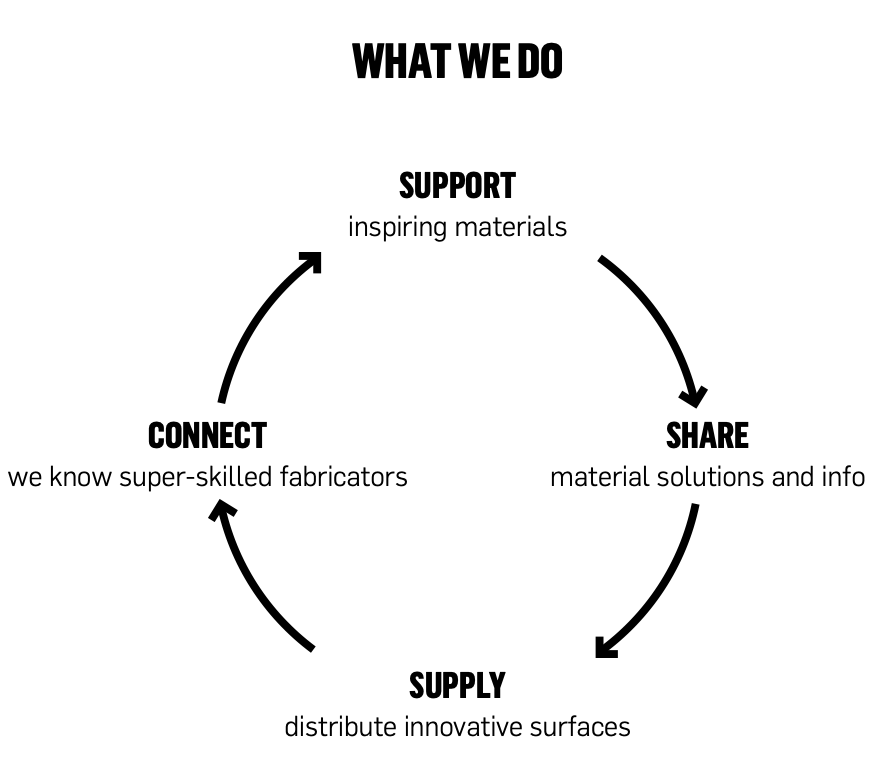Study Trip to London
- Emily Spooner
- Mar 1, 2023
- 4 min read
Updated: Apr 23, 2023
To gain inspiration for my material choices for my IMP I joined the study trip to London to explore material libraries and some Art Exhibitions to get some inspiration on how to use these materials in installations.
Materials Lab-

Materials Lab was created to support Johnson Tiles in 2006 and has since partnered with VADO, Egger, Abode and Tektura. Along with other smaller companies and designers they showcase a wide range of materials, colours and design options. The show room is open to clients and students to explore different materiality options and create material boards. There are also several areas designated to showroom displays. These are useful to see how the specific materials can be combines with fixtures and fittings to create a finished room.
Zena Holloway-
I was particularly interested in looking at the samples of Zena Holloways fabric that is made from dried wheat grass roots. The roots can be moulded into shapes using beeswax moulds. The finished product can then be dyed to change the finish. The outcome is sturdy and rigid but can be formed to create clothing as well as other fixtures such as light shades. Holloway has also exhibited her work in art shows and craft festivals around the world. As well as creating a series of underwater photographs highlighting there beauty.
Next Steps-
I plan to replicate Holloways process of growing and then drying out roots to create a fabric on my one using wheat grass. I will also try to create moulds that link to my IMP conceptual starting points to link this to my project. It could then be used for my selected detail later on.
RIBA Exhibition-
We visited the Long Life, Low Energy, Designed for Circular Economy exhibition at the RIBA building in London. The exhibition was particularly informative for me as my project revolved around a circular economy that links the materials of the building to the uses of the building.

The piece of the exhibition that was most interesting for me was the section around using waste products to colour and manufacture new products and materials. For example using food waste such as orange peel or coffee grinds to colour and strengthen organic alternatives to harsh chemical based materials. They create carbon zero products that help to absorb harmful toxins and also to help deal with the amount of food waste that ends up in landfill. Other waste products such as bottle corks and glass can also be recycled in a similar way.
Next Steps-
These material examples in the RIBA exhibition have inspired me to experiment with making my own bio-materials as these examples all use house hold waste products. This idea of using waste products also links into the circular-economy that I am aim to create within in this project. As the waste products from the garden and kitchens that are in the project can be used to create materials that are used to make the building.
Surface Matter-

Surface Matter describe themselves as a collective of Proud Materialists who bridge the gap between the designers and makers who push the boundaries to bring materials to life, for good. They are mainly a studio but have curated a materials library that encompasses their whole studio from their desks and kitchen area to the shelves and shelves of samples. The materials that they have on show offer a range of different solutions for projects with lots of materials that offer a unique alternative to your standard materials.

The company is set up to not only supply materials but also to provide design and material support to practitioners, students and members of public. They have a team of staff who are knowledgable in the materials they show and talking to them made me question the materials I use from a different perspective. They talked about how materials make people feel and how they affect the way people use a space.
Mike Nelson- Hayward Galleries-

This exhibition was a collection of some of Nelson's favourite projects and installations from the last few decades. There is a feeling of industrial chaos spread throughout that is juxtaposed by the lighting and silence as you walk around that is quite relaxing. While I didn't feel that I fully understood all the installations I could appreciate the position and settings for each piece they felt like they had adopted the space they were positioned in. While I enjoyed most of it some of the more dystopian installations made me feel a little uncomfortable but on reflection maybe this was the intention of Nelsons work.
LIGHTING- Triple Bluff Canyon and Imposter-
Two of Nelsons installations in this exhibition use red lighting to set the mood for the experience, the lighting is reminiscent of that of a dark room in a photography studio. The red light creates a very quiet environment everyone talks softly not wanting to disturb the peace while simultaneously creating a feeling of darkness. The shadows become bigger and the the details in objects are lost, the result of this is a space that comes confused and you can easily get lost in. Dependent on the lighting chosen in a space it can greatly affect the way we perceive the materials and objects in a room. As a result I feel that for my building it is important to make use of as much natural light as possible to give the most amount of focus to the natural growth and materials in the building.
Next Steps-
While my building has a lot of natural lighting and is a lot larger than the spaces in this exhibition I really engaged with the use of lighting and how it made you appreciate the space more as well as invoking a specific feeling and atmosphere in the space. So I want to look into how lighting can be used creatively to partition the spaces in my project and the way people experience them.
References-











Comments